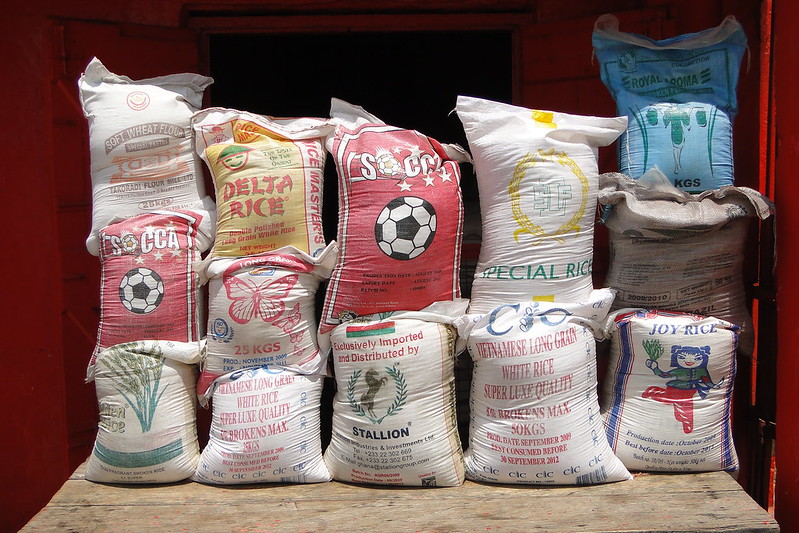Alexander Langer is a law student at NYU School of Law and guest contributor on this blog.
After years of steadily rising global food security, more people will go hungry this year because of COVID-19 and the related global economic crisis. However, the global food system that is so vulnerable to these shocks continues to chug along, and U.S. global agricultural policy remains committed to a market-oriented framework that reinforces these vulnerabilities.
The USDA Economic Research Service’s (ERS) 2020 International Food Security Assessment predicts that COVID-19 will increase food insecurity this year. While ERS cautioned that its predictions are uncertain, it estimated that there are 83.5 million more food-insecure people this year, an 11 percent increase, because of the COVID-19 pandemic This sudden surge disrupts a longer-term trend of rising incomes and increased food security: ERS predicts that “[p]er capita income in the [coming] decade is projected to increase by almost 42 percent on average for the 76 countries [surveyed], but this is 1.3 percentage points lower than the pre-COVID-19 estimate.”
The COVID-19 pandemic may be a discrete event disrupting otherwise-stable trends, but climate change raises serious – and, in the report, unaddressed – questions about the stability of those trends themselves. According to ERS, a key driver of predicted declines in food insecurity is stability of international food commodity prices, resulting from production outpacing the growth of food demand for major staple crops over the next decade. However, the report does not discuss how this predicted price stability may be impacted by climate change. A failure to consider climate change as a variable is a chronic problem in ERS assessments: the last International Food Security Assessment to explicitly discuss the effects on climate change on food security was in 2010. Given that climate change will have severe effects on agricultural production in both the United States and abroad, eliding discussion of it is a major limitation for ERS’s analysis.
This isn’t the only issue with the report. The report does not justify its underlying assumption that food security is best served by the free flow of trade through an integrated global food system. While this approach may reduce prices, it makes countries that are reliant on food imports vulnerable to shocks, whether from the imposition of trade barriers during crises like the COVID-19 pandemic or simply spikes in food prices. Meanwhile, the displacement of local farmers who cannot compete with cheaper – and often subsidized – imported commodities can cause unforeseen problems, such as the collapse of the Haitian rice industry in the face of American imports.
These policies have been encouraged by the USDA Foreign Agricultural Service’s international programs, intended to combat food insecurity abroad. With their focus on increasing production, free flows of trade, and a model of food security focused on access to commodity crops, these programs fit into the broader vision of food security advanced by the U.S. government, but make countries which rely on imported food more vulnerable to global market shocks, whether due to global economic crisis, pandemics, or the looming threat of climate change.
According to the Congressional Research Service (CRS), from the 1954 Food for Peace Act onwards, the United States provides food aid largely through in-kind transfers of commodity crops. Two USDA programs – the McGovern-Dole Food for Education Program, and Food for Progress – use donated American commodity crops to supplement food available in local markets to address food insecurity. McGovern-Dole provides donated food and other assistance to projects supporting school meals, child and maternal nutrition, and education projects, particularly for girls. While this program has financed valuable projects, the Trump administration has proposed eliminating funding for McGovern-Dole. Meanwhile, Food for Progress “monetizes” donated commodities by selling them on local markets, and then directs the revenue towards projects improving local agricultural production. According to the CRS, “recipient country governments must make commitments to introduce or expand free enterprise elements in their agricultural economies” in order to receive assistance through this program, further entrenching a regime that enhances exposure to volatile markets.
As such, while the USDA’s International Food Security Assessment may be taken as a useful source of data on current international trends, its lack of climate change analysis and framing which implicitly rejects alternative models to the existing market-oriented policy framework make it a constrained source of information for predicting the future. The USDA may be correct that the COVID-19 pandemic will only temporarily increase global food insecurity, but without addressing the vulnerabilities of the current system, countries will remain vulnerable to the next shock.
The views and opinions expressed on the FBLE Blog are those of the authors and do not necessarily reflect the official policy or position of FBLE. While we review posts for accuracy, we cannot guarantee the reliability and completeness of any legal analysis presented; posts on this Blog do not constitute legal advice. If you discover an error, please reach out to contact@farmbilllaw.org.


